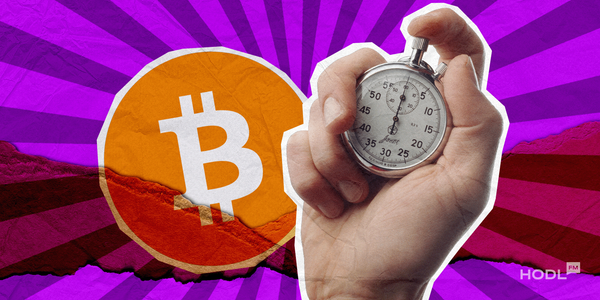Blockchain technology may sound complex, but breaking it down into simpler layers can make it a bit more digestible. Here, we’ll explain the three foundational layers of blockchain including Layer 1, Layer 2, and Layer 3. Each one has its own features, limitations, and solutions.
Layer 1
Layer 1 is the foundation of any blockchain ecosystem. Think of it as the foundation of a house as it’s responsible for the entire structure’s stability. Layer 1 blockchains handle all the transactions, consensus mechanisms, and security features. Some big names in this layer include Bitcoin, Ethereum, and Solana.
Key Features of Layer 1
Layer 1 focuses on security and decentralization. The layer processes and records every transaction, while also keeping the environment safe. Because Layer 1 is designed to be tamper-proof, users can trust that their data is secure.
- Consensus Mechanisms: Most Layer 1 blockchains use either Proof of Work (PoW) or Proof of Stake (PoS) to confirm and secure transactions.
- Security: Layer 1 is very secure because it is decentralized. There's no single person or group controlling the network.
The Pros of Layer 1
- Decentralization: One of the best things about a Layer 1 blockchain is that no central authority oversees it.
- Security: The mix of decentralized validators and strong cryptographic methods makes Layer 1 super secure.
- Trust: Everything occurs on the blockchain and is verified by the public, creating a system based on transparency.
The Cons of Layer 1
- Scalability Issues: While Layer 1 does well with security and decentralization, it can be quite slow. As more people use Layer 1 blockchains, transaction confirmation times can take a while.
- Energy-Intensive (PoW): Proof of Work systems, like Bitcoin, need a huge amount of computer power, which results in a big carbon footprint.
Layer 2
Layer 2 solutions are built on top of Layer 1 blockchains to tackle scalability challenges. In simpler terms, Layer 2 helps Layer 1 handle more transactions by moving some of them off the main chain. The layer processes them more efficiently, and then sends the results back to the primary chain. Examples of Layer 2 blockchains include Polygon, Optimism, and Arbitrum.
How Does Layer 2 Work?
Layer 2 operates separately from the main Layer 1 chain. It allows transactions to be grouped together and sent back to Layer 1 without clogging up the main network. Once the transactions are confirmed on Layer 2, they’re sent back to Layer 1 for final approval. This ensures that everything stays as secure as Layer 1 while speeding up the process.
Key Layer 2 Solutions
- Rollups: Rollups combine multiple transactions into a single one and then submit that bundle to the Layer 1 blockchain for final verification.
- Sidechains: These are independent blockchains that run alongside the main blockchain. They are connected to Layer 1 but have their own rules. For example, Polygon works with Ethereum, while Liquid is designed for Bitcoin.
- State Channels: This solution lets two parties create a direct connection for transactions without using the main chain until the final agreement is made.
- Nested Blockchains: Nested blockchains follow the rules of the parent chain but can handle their own transactions, making it easier to scale.
The Pros of Layer 2
- Scalability: Layer 2 solutions help speed up transactions while still enjoying the security benefits of Layer 1.
- Lower Fees: With fewer transactions on Layer 1, there's less congestion, which means lower fees for users.
- Flexibility: Different Layer 2 solutions can be tailored for specific needs such as gaming, small payments, or NFTs.
The Cons of Layer 2
- Security Trade-offs: Some solutions such as sidechain may not have the same level of security as the main chain. If a sidechain gets compromised, the main blockchain remains safe, but the sidechain is still at risk.
- Complexity: Implementing Layer 2 solutions can be tricky as they rely on Layer 1 for final confirmations.
Layer 3
Now that we’ve covered the solid foundation of Layer 1 and the speed boost from Layer 2, it’s time to look at Layer 3, which is all about user interface. It’s also known as the “application layer.”
The Role of Layer 3
Layer 3 sits on top of Layer 2 to provide user interfaces and applications. Layer 3 makes it easy for people to interact with blockchain technology. Without Layer 3, we’d be stuck writing code or dealing with confusing command lines every time we wanted to make a transaction. Examples of Layer 3 blockchains include Uniswap, OpenSea, and Aave.
Types of Layer 3 Applications
- Decentralized Applications (dApps): These include platforms like Uniswap and gaming platforms like Axie Infinity.
- Smart Contracts: These are self-executing contracts where the terms are written into code, allowing for smooth and trustworthy interactions.
- User Interfaces: These user-friendly tools make it easy for everyone to use blockchain technology, even if they’re not tech-savvy.
The Pros of Layer 3
- Improved User Experience: Layer 3 makes blockchain accessible to everyday users by offering simple interfaces and applications.
- Focus on Specific Needs: Layer 3 facilitates user interaction and creates apps for different areas including finance, gaming, or NFTs
The Cons of Layer 3
- Dependency: Layer 3 solutions rely heavily on how well Layers 1 and 2 perform. If there are issues in those layers, Layer 3 can fall apart.
- Security Risks: Since Layer 3 is closest to users, it can become a target for attacks, especially if its dApps are not well-designed or executed.
Layer 1 provides the foundation, Layer 2 boosts speed, and Layer 3 makes the blockchain user-friendly. Together, they create a more efficient and accessible blockchain experience.
Layer 1 vs Layer 2 vs Layer 3
Here’s a simple table comparing Layer 1, Layer 2, and Layer 3 blockchains.
|
Layer |
Purpose |
Pros |
Cons |
Examples |
|
Layer 1 |
Base protocol |
High security, decentralization |
Slow transactions, scalability issues |
Bitcoin, Ethereum, Solana |
|
Layer 2 |
Scalability solutions built on Layer 1 |
Fast transactions, lower fees |
May sacrifice some security and decentralization |
Optimism, Arbitrum, Polygon |
|
Layer 3 |
User interaction, dApps, and services |
Improved user experience, dApp development |
Depends on Layer 1 and Layer 2 for security |
Uniswap, OpenSea, Aave |
Why Do We Need All Three?
Each layer serves its own purpose, and blockchain wouldn’t be as effective if we only had one layer to work with.
- Layer 1 ensures that everything is secure and decentralized, but it struggles to keep up with transaction volume.
- Layer 2 helps Layer 1 scale, allowing for more transactions at faster speeds, but it still relies on Layer 1 for final validation.
- Layer 3 focuses on the user experience, making blockchain accessible to the masses through decentralized applications
Which Layer Should You Care About?
So, which layer is the most important? Well, that depends on who you are and what you’re looking for. If your priority is security, Layer 1 would be more appropriate to your needs. If you’re looking for speedy transactions, Layer 2 would serve you well. And if you’re all about creating or using dApps, then Layer 3 is where you’ll feel at home.
At the end of the day, each layer is crucial in its own right, and the future of blockchain will depend on all of them working together.
Disclaimer: All materials on this site are for informational purposes only. None of the material should be interpreted as investment advice. Please note that despite the nature of much of the material created and hosted on this website, HODL FM is not a financial reference resource and the opinions of authors and other contributors are their own and should not be taken as financial advice. If you require advice of this sort, HODL FM strongly recommends contacting a qualified industry professional.



